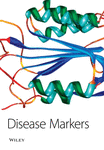Multimarker Approach in Cardiovascular Risk Prediction
Abstract
Various biomarkers express different pathways and pathophysiologic mechanisms of cardiovascular disease, such as inflammation, oxidative stress, myocardial injury, activation of the neurohormonal pathways, myocardial stress and renal function. Current thinking supports the notion that the combination of these biomarkers could increase their diagnostic and prognostic value. The multimarker approach offers benefits since it increases the diagnostic and prognostic information and may help in the design of a strategy for prevention or management of cardiovascular diseases. The purpose of the current review is to describe the characteristics of promising biomarkers which have shown an important additive value in the assessment of cardiovascular risk. Also, an extended reference is made regarding studies that address the prognostic value of multimarker models in the settings of primary prevention of cardiovascular disease and secondary prevention for patients with acute coronary syndromes, chronic coronary artery disease and heart failure.




